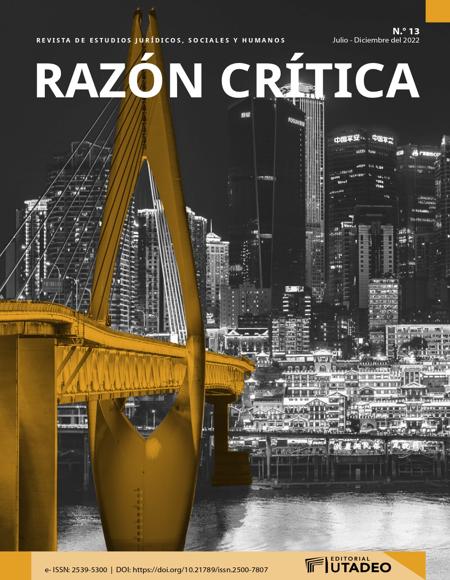Esta obra está bajo una licencia internacional Creative Commons Atribución-NoComercial-CompartirIgual 4.0.
Resumen
This paper studies the short-run and long-run relationships between trade, investment, and the Chinese economic growth from 1992 to 2019. A vector error correction (VEC) model was estimated in order to analyze the causal relationships among balance of trade, investment (both national and foreign), and economic growth. The results helped us to discuss the mechanisms considered within the mercantilist literature to relate a positive balance of trade and economic growth. Particularly, the estimation suggests that the causality mechanism between the variables is closer to a financial mercantilist or developmental explanation or rather than a monetarist mercantilist approach. That is, the positive effect of the commercial balance on economic growth in China seems related to the increase of national investment, instead of the attraction of foreign direct investment.
Citas
Ben-Bassat, A. & Gottlieb, D. (1992). Optimal International Reserves and Sovereign Risk. Journal of International Economics, 33 (3-4), 345-362. https://doi.org/10.1016/0022-1996(92)90008-8
Bonatti, L. & Fracasso, A. (2013). Hoarding of international reserves in China, Mercantilism, domestic consumption and U.S. Monetary Policy. Journal of International Money and Finance, 32, 1044-1078. https://doi.org/10.1016/j.jimonfin.2012.08.007
Branstetter, L. G.& Feenstra, R. C. (2002). Trade and foreign direct investment in China: a political economy approach. Journal of International Economics, 58(2), 335-358. https://doi.org/10.1016/S0022-1996(01)00172-6
Branstetter, L. & Lardy, N. (2006). China's embrace of globalization (No. w12373). National Bureau of Economic Research. https://doi.org/10.3386/w12373
Gao, T. (2003). Ethnic Chinese networks and international investment: evidence from inward FDI in China. Journal of Asian Economics, 14(4), 611-629. https://doi.org/10.1016/S1049-0078(03)00098-8
Chang, H. J. (1999). The Economic Theory of the Developmental State. In Woo-Cumings, M. (ed.) The Developmental State. Ithaca (N.Y.): Cornell University Press.
Charemza, W. W. & Deadman, D. F. (1992). New Directions in Econometric Practice. Aldershot (UK): Edward Elgar Publishing.
Dash, A. K. (2005). An Econometric Estimation of the Aggregate Import Demand Function for India. International Business Research Conference, pp. 1-19.
Dooley, P. M., Folkerts-Landau, D. & Garber, P. (2005). International Financial Stability. New York: Deutsche Bank.
Engle, R. F. & Granger, C. W. J. (1987). Co-integration and Error Correction: Representation, Estimation, and Testing. Econometrica, 55(2), 251-276. https://doi.org/10.2307/1913236
Johansen, S. & Juselius, K. (1990). Maximum likelihood estimation and inference on cointegrationwith applications to the demand for money. Oxford Bulleting of Economics and statistics, 52(2), 169-210. https://doi.org/10.1111/j.1468-0084.1990.mp52002003.x
Lardy, N. R. (2016). China: Toward a Consumption-Driven Grwoth Path. In Y. Zhou (ed.) “Seeking Changes. The Economic Development in Contemporary China”. Beijing (China): Central Compilation and Translation Press. https://doi.org/10.1142/9789814656306_0004
Lardy, N. (2002). Integrating China into the Global Economy. Washington: Brookings Institution.
Lind, J. & Press, D. G. (2018). Markets or Mercantilism? How China Secures Its Energy Supplies. International Security, 42(4), 170-204. https://doi.org/10.1162/isec_a_00310
MacKinnon, J.G., Haug, A. & Michelis, L. (1999). Numerical distribution functions of likelihood ratio tests for cointegration. Journal of Applied Econometrics, 14(5), 563-577. https://doi.org/10.1002/(SICI)1099-1255(199909/10)14:5<563::AID-JAE530>3.0.CO;2-R
Osterwald-Lenum, M. (1992). A note with quantiles of the asymptotic distribution of the maximum likelihood cointegration rank test statistics. Oxford Bulleting of Economics and Statistics, 54(3), 461-472. https://doi.org/10.1111/j.1468-0084.1992.tb00013.x
Pesaran, H.M. & Pesaran, B. (1997). Microfit 4.0. Oxford (UK): Oxford University Press.
Prestowith, C. (2021). The World Turned Upside Down. New Haven and London: Yale University Press.
Rodrik, D. (2006). What’s so special about China’s exports? China & World Economy, 14(5), 1-19. https://doi.org/10.1111/j.1749-124X.2006.00038.x
Schell, O. & Shirk, S. L. (2019). Course Correction: Toward an Effective and Sustainable China Policy. Asia Society. Task Force Report, February 2019.
Strub, D., Chen, R. & Driscoll, I. (2018). 2018 China Business Report. The American Chamber of Commerce in Shanghai. AmCham Shanghai and PwC. Obtained from https://www.amcham-shanghai.org/sites/default/files/2018-07/2018%20China%20Business%20Report_0.pdf
Tian, Y. & Pentecost, E. J. (2010). The Changing Sources of Real Rate Fluctuations in China, 1995-2017: Twinning the Western Industrial Economies? The Chinese Economy, 52(4), 358-376. https://doi.org/10.1080/10971475.2018.1559123
UNCTAD (2021). From Recovery to Resilience: The Development Dimension. Trade and Development Report 2021. Geneva: UNCTAD.
UNCTAD (2003). Capital Accumulation, Growth and Structural Change. Trade and Development Report 2033. Geneva: UNCTAD.
Wang, Y. (2010). Effectiveness of Capital Controls and Sterilizations in China. China & World Economy, 18(3), 106-124. https://doi.org/10.1111/j.1749-124X.2010.01199.x
Woo-Cumings, M. (1999). Introduction. In M. Woo-Cumings (ed.) The Developmental State. Ithaca (N.Y.): Cornell University Press. https://doi.org/10.7591/9781501720383
Yao, S. (2006). On economic growth, FDI and exports in China. Applied Economics, 38(3), 339-351. https://doi.org/10.1080/00036840500368730
Zhang, K. H. & Song, S. (2001). Promoting exports: the role of inward FDI in China. China Economic Review 11(4), 385-396. https://doi.org/10.1016/S1043-951X(01)00033-5

 PDF (English)
PDF (English)
 FLIP
FLIP












